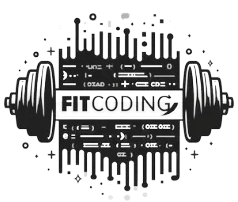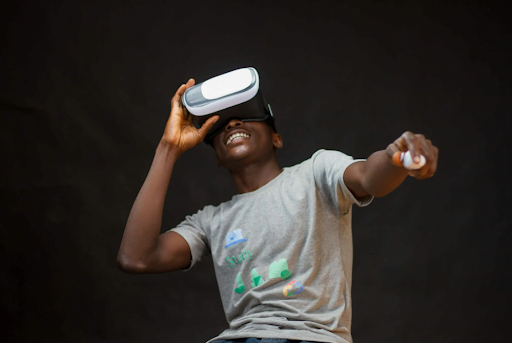A decade ago, walking through a simulated surgery room, exploring Mars from a classroom, or running diagnostics on an offshore oil rig from thousands of miles away would have been science fiction. Only now is it possible but increasingly common, all because of the magic of VR (Virtual Reality) and AR (Augmented Reality). And leading the charge? Unity is the game engine far beyond gaming. The real magic lies in how this once inaccessible technology is now being integrated across sectors like medicine, education, manufacturing, and energy — thanks in large part to Unity game development services, which have made the creation of immersive, interactive experiences more achievable than ever, even turning virtual worlds into parts of the real one.
Why Unity Is the Backbone of VR/AR Development
Unity was not the pioneer in VR/AR support. There have been others before, but it is undoubtedly the one that made sense. Unity’s true strength lies in its versatility, ease of integration with third-party SDKs, and platform-agnostic approach. You can develop on it once and launch it on a whole series of devices — from Oculus Quest and HoloLens to smartphones and even a web browser.
Key features are:
- XR Plugin Management High-Level
- Rendering through URP and HDRP pipelines & Cross-platform
- Deployment with Negligible Performance Drop & Strong Community and Documentation
All the above features make Unity a tool and a framework for innovation, a virtual sandbox for any team dreaming of blending the physical and digital.
Real-World Impact: How Industries Are Using Unity for VR/AR
Healthcare: Training Without the Trauma
Picture a young surgeon-in-training going through a virtual operation, walking the instruments by haptic feedback to feel and learning procedures without ever having to risk a life. That is not just impressive but a game-changer.
- Medical students can practice surgery through immersion using the help of surgical simulations.
- AR diagnostics support doctors in live operations.
- Patient education apps show conditions or procedures with 3D overlays.
Unity allows fast prototyping for such applications, enabling healthcare companies to validate concepts and early interaction design entirely without huge investments.
Manufacturing & Energy: Safety in Simulation
Industrial sites are dangerous and costly training grounds. Unity helps to simulate these high-risk environments with real-time physics, lifelike interactions, and spatial data visualization.
- AR-based maintenance apps overlay data onto real-world equipment.
- Workers are onboarded via VR simulators before stepping into a factory.
- Remote monitoring tools visualize operations from anywhere.
These applications don’t just save money—they save lives.
Education: From Boring to Boundless
Unity allows teachers to create lessons that take students to the moon, inside a molecule, or experience historical events.
- Augmented reality textbooks bring concepts to life in real-time.
- Virtual chemistry and physics labs.
- Interactive 3D classrooms for remote learning.
When the user’ experiences’ material with Unity, this is possible and scalable, improving learning retention.
Optimizing for Budget Without Sacrificing Experience
One myth about immersive tech is that it’s prohibitively expensive. But Unity is proving otherwise. Here’s how competent teams are trimming fat without cutting muscle:
1. Leverage Existing Unity Assets
Unity’s large Asset Store allows creators to begin projects using ready 3D models, shaders, and scripts. Rather than starting from nothing, one can purchase or modify existing solutions, eliminating weeks of dev time.
2. Use Modular Architecture
Instead of creating huge apps, groups are planning with plug-and-play parts. This means that updates, upgrades, and platform-specific changes do not need entire rewrites.
3. Prioritize Platforms Strategically
Unity allows you to deploy across many platforms. You need not launch everywhere at once. Start with one high-impact use case VR on Meta Quest and expand gradually.
4. Work With the Right Partners
Collaboration with experienced studios can reduce costs. N-iX Games rolls out Unity-certified game development teams that integrate seamlessly into your development workflow, saving you the expense of hiring internally or dealing with the trial-and-error process of onboarding. Their model for extending teams offers continuity and performance without the associated overhead costs of building a team from the ground up.
The Hidden Value: Speed, Scale, and Support
Unity game development offers more than just cost benefits. It accelerates every stage of development, from ideation to deployment. Whether experimenting with a new interaction model or building a multi-user immersive environment, Unity supports a fail-fast, iterate-faster approach.
Do you have a concept that needs validation? Unity’s rapid prototyping capabilities allow developers to test gameplay or interaction mechanics in days—not weeks. This is crucial for VR/AR products, where user experience is often built on subtle, tactile feedback loops that benefit from early user testing.
Ready to scale from prototype to production? Unity’s built-in back-end support, tight integration with cloud services (especially AWS), and WebGL export options streamline the transition from small-scale MVPs to robust enterprise solutions. Whether you’re pushing to mobile, standalone headsets, or browser-based AR, Unity keeps the pipeline lean and scalable.
What about after the launch? That’s where experienced partners like N-iX Games come in. They don’t just build and bounce—they provide long-term technical leadership, managing everything from bug fixing and optimization to rolling out new features, content updates, and platform porting. This ongoing collaboration ensures your product doesn’t just launch; it evolves and thrives.
Ultimately, Unity isn’t just a product—it’s an ecosystem. And it’s one that even many experienced developers haven’t fully tapped into. Those who do, however, unlock a new level of creative and technical velocity.
Not Just a Game Engine — A Reality Engine
It’s easy to think of Unity as a gamer’s tool. And, to be fair, it is. But today, it’s also the tool behind doctors doing pre-op visualizations, engineers doing virtual inspections, students attending metaverse classrooms, and businesses building their virtual showrooms. As the metaverse inches closer to mainstream and industries grow more comfortable with digital twins, immersive learning, and virtual collaboration, that relevance can only deepen.
Closing Thoughts: The Future Is Mixed
The divide between physical and digital is no more. VR and AR are not “futuristic features” anymore — they are practical necessities for training, education, collaboration, and diagnostics. Unity makes these tools not only powerful but also accessible. With experienced development partners like N-iX Games, even the most ambitious cross-platform immersive applications can be delivered on time, within budget, and without compromise. Unity helps creators and innovators tell stories that people can step into — for in this world of scarce attention where engagement defines impact, why tell your audience what’s possible when you can let them live it?











